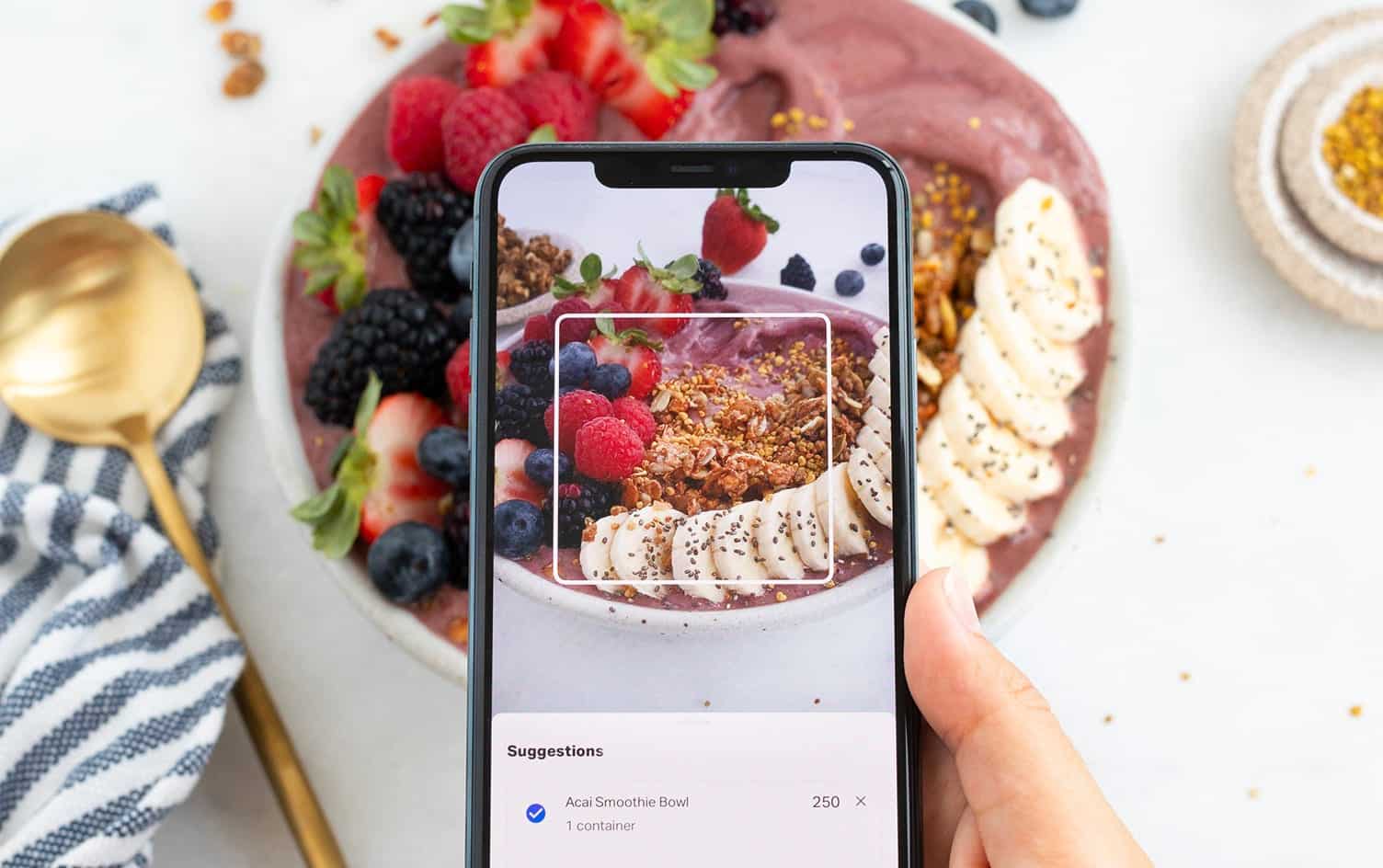
Whether your goal is to lose weight, build strength, perform at your peak or improve your overall health, keeping an accurate food journal of what you eat and drink is essential. It provides valuable insight into your nutrition habits, so you can see trends and make adjustments as needed. Sometimes, people put off tracking their food intake because they’re worried it’ll take too much time and effort. However, MyFitnessPal has a host of tools that make logging your food intake a breeze in just 15 minutes or less per day.
Here’s everything you need to know about why tracking matters and how it works:
[eg_header]WHY TRACK YOUR FOOD[/eg_header]
One of the main reasons tracking is so useful is people aren’t great at remembering or estimating what and how much they’ve eaten, research finds. Without recording your food intake, it can be easy to overeat and often takes longer to reach your goals. In fact, research shows keeping a food diary is one of the most effective weight-loss strategies.
Whether you count calories, macros or both, tracking your food helps you learn about how you eat and helps you become more consistent with recognizing portion sizes. It’s worth noting calorie and macro counts aren’t always totally accurate on food labels. In its guidance for the food industry, the USDA sets a plus or minus buffer of 20%, meaning it’s acceptable for calorie counts to be over- or underestimated by 20%. The good news is, tracking consistently is proven to help you reach your goals. It helps you be more mindful of what and how much you’re consuming and how it affects your body. The more you log, the better able you are to create healthy habits to improve your health long term.
[eg_header]HOW TO TRACK YOUR FOOD[/eg_header]
STEP 1: DETERMINE HOW MUCH TO EAT
First, you’ll want to calculate the daily calorie intake that makes sense for you and your goals, so you have a clear plan for each day.
The MyFitnessPal app makes it easy by doing these calculations. The app uses factors like your height, weight, activity level, age, gender and goals to estimate your target daily calorie intake. (If you have further questions about how much to eat, you could always consult a registered dietitian or another qualified professional.)
From there, you may want to break down your calories into the three macronutrients: protein, carbohydrates and fat. (Technically, alcohol is its own macronutrient, but you don’t need to set aside any macros for it because it’s not a nutrient we need to survive.) MyFitnessPal automatically sets your macros to 50% carbs, 20% protein and 30% fat, but different ratios may make more sense based on your goals.
Once you know how much to eat, you can determine how you want to split that up throughout the day — whether in three meals, five meals, etc. — as well as which foods you’ll use to make up those calories and/or macros. If you’re not sure where to start, try MyFitnessPal Plans, which are tailored to various nutrition goals, such as eating a higher-protein diet, and can help ease the transition to eating healthier.
STEP 2: SEARCH FOR THE FOODS YOU’RE EATING
MyFitnessPal’s food database (with 14 million foods and counting) helps you locate the foods you eat at each meal so you can add them to your diary.
This is easier than it sounds because MyFitnessPal has the world’s largest database of foods. Better yet, it’s constantly expanding to ensure users can easily log whatever they want to eat.
You have a few options for locating foods in the database. When you have the app open, click the plus sign at the bottom of your screen. Then, select the food icon and the meal you want to log. From here, you can use:
- Food Search: Type the name of the food you’re looking for (including the brand name, if relevant) into the search bar. You’ll see a list of foods come up. Select the food that best matches what you’re eating.
Pro tip: Whenever possible, choose foods that have a green checkmark next to them. This indicates the nutrition information has been verified as accurate by the MyFitnessPal team.
- Barcode Scanner: If you’re eating packaged food and you are MyFitnessPal Premium user, simply use your phone’s camera to scan the barcode on the package. If it’s already in the MyFitnessPal database (and chances are, it is!), the entry is pulled up on your screen. If not, you’ll have the option to enter the nutrition information yourself in a new entry. This new entry can also be found via food search, the barcode scanner or your My Foods list in the future, meaning you won’t have to enter all the information again next time.
- Recipe Discovery: If you’re looking for healthy recipe inspiration, recipe discovery is a great place to start. Search and log hundreds of different recipes, from high-protein to low-carb. You can also save recipes from anywhere on the web (including the MyFitnessPal blog) without having to manually add each ingredient. You can also use this tool to calculate the nutrition information for any recipe.

- Meal Scan: If you’re a MyFitnessPal Premium member with iOS, you’ll have the option to use the new Meal Scan feature, which allows you to take a photo of your food to locate it in the database faster — no typing required.
STEP 3: RECORD THE AMOUNTS
Lastly, you’ll want to log how much of each food you’re eating. There are several different ways you can record the food amounts for a more accurate food journal.
- Volume: One easy way to gauge how much you’re eating is by using volume measurements like cups, tablespoons, teaspoons, etc. Volume measurements tend to be less accurate than weight measurements (1 cup of whole nuts versus 1 cup of chopped nuts can be vastly different weights and thus, vastly different caloric values) but are easier to implement.
- Weight: The most accurate way to track your food is by weight. Usually, this is done in grams or ounces with the help of a food scale. While measuring the weight of fruits and vegetables probably isn’t necessary, this strategy can help ensure you get the amounts of more calorie-dense foods right, like oils, nut butters, pasta and so on.
- According to packaging: For some packaged foods, you might find the database includes information based on the packaging itself. For instance, 1 string cheese, 1 container of yogurt, or 1 packet of crackers.
[eg_header]8 WAYS TO MAKE TRACKING SEAMLESS[/eg_header]
Now that you know the basics, there are some ways to make tracking feel like second nature, so it doesn’t require as much effort.
SAVE FREQUENTLY EATEN MEALS
Combat tracking fatigue by saving meals you rely on regularly via the Meals feature. Rather than logging each item in the meal individually, you’ll be able to log them all at once.
DISCOVER NEW RECIPES
Make use of MyFitnessPal’s vast recipe database to find meal and snack ideas that fit your needs. Click the “Log It” button at the bottom for easy tracking.
IMPORT YOUR FAVORITES
You can also import your go-to recipes from other sources manually or from a website. These will be saved under the Recipes tab in the food database page.
LOG RIGHT AWAY
Make sure to log your food immediately after you eat (or even before if you want to get a sense of how it will affect your daily calorie or macro goal). The longer you wait to log, the easier it is to forget what you consumed.
USE A FOOD SCALE
Measuring your food using a food scale helps you get a sense of portion sizes. That way, when you need to eyeball something, you have a better sense of how much you’re actually consuming.
TRACK HYDRATION
Thirst can often be confused with hunger, which is why it’s important to stay hydrated and prevent cravings that could otherwise pop up. Make sure to log the water you drink as well as other beverages such as coffee, tea or juice. You might find you consume more sugary beverages than you thought, so this can be a helpful way to cut back and save calories.
GET CONFIDENT WITH TAKEOUT AND EATING OUT
It’s common to sometimes worry about logging restaurant food accurately. One of the best things about the Meal Scan feature is it makes logging food you didn’t cook yourself simple.
LOOK FOR TRENDS
After you’ve been tracking for at least two weeks, go back and look at your data. Can you find any trends? You might notice you feel more full when you eat protein earlier in the day. Or that you feel tired when you haven’t had enough water. Or that your weight spikes the day after you drink alcohol but then drops again. By using the Notes feature within your food diary, you can better track how you’re feeling day-to-day for long-term monitoring of your progress.
Unlock an experience that’s like having a dietitian, trainer and coach — right at your fingertips. Go Premium for expert guidance and exclusive tools that will help you reach your personal health goals.




